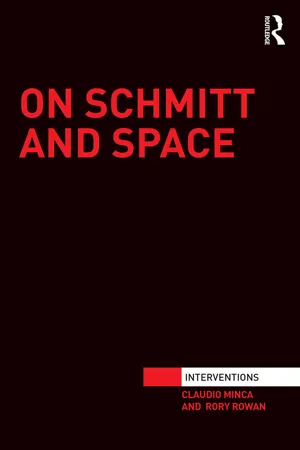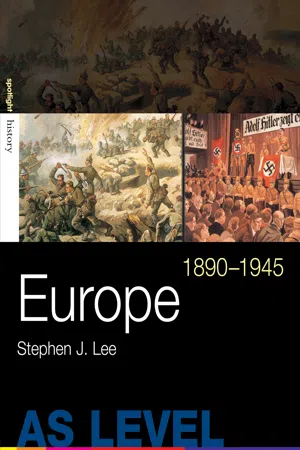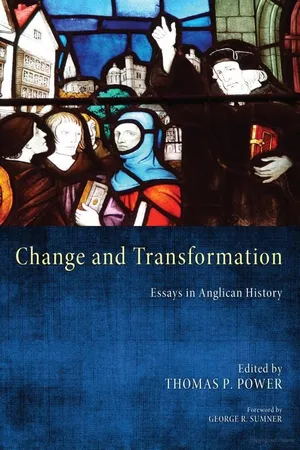History
Enabling Act
The Enabling Act was a law passed by the German Reichstag in 1933, which gave Chancellor Adolf Hitler the power to enact laws without the involvement of the Reichstag or the President. This effectively allowed Hitler to establish a dictatorship and consolidate his control over Germany. The Enabling Act marked a significant turning point in the rise of Nazi power and the erosion of democratic institutions in Germany.
Written by Perlego with AI-assistance
Related key terms
1 of 5
8 Key excerpts on "Enabling Act"
- eBook - ePub
- Claudio Minca, Rory Rowan(Authors)
- 2015(Publication Date)
- Routledge(Publisher)
This was a largely powerless institution – set up by Hermann Göring ‘to affect a fake marriage of Prussian tradition and Nazi Revolution’ (Müller, 2003 : 37) – for which Hitler showed clear disregard but which Schmitt, even in later life, considered a great honour. He returned the favour to his new masters by voicing his support for the Enabling Laws, an amendment to the Weimar Constitution granting the executive arm of government (meaning Hitler and the Party) the power to enact laws without the involvement of the Reichstag. This move effectively dissolved the division of power between executive and legislative branches of government that lay at the basis of the German Republic's constitutional arrangements, making room for the direct implementation of Nazi policy measures with the force of law, while the Constitution remained as an empty husk. The Enabling Act de facto ‘enabled’ Hitler with unlimited power and gave him uncontestable leadership over the German state. Schmitt also openly embraced the virulent anti-Semitic discourse of the new regime, something that had been absent from previous published work, peppering his speeches with racist quotations from Hitler and even referring to Albert Einstein as a ‘poison-filled German hater’ (in Balakrishnan, 2000 : 183; see also, Gross, 2007 ; Zarka, 2005). Although largely symbolic, these new roles wound Schmitt into the apparatus of the Nazi state and placed him in a powerful position in Germany's most prestigious academic institution; however, his motivation for joining the Party and entering these institutional entanglements remains a matter of considerable critical debate. From the very beginning, in fact, he faced accusations of opportunism from some in the Party who were suspicious of his commitment, recalling his opposition to the National Socialists before Hitler took the chancellorship - eBook - ePub
- Stephen J. Lee(Author)
- 2020(Publication Date)
- Routledge(Publisher)
The term ‘legal revolution’ has been used to describe Hitler’s overall approach to power in the opening two years of his regime. It is seen as an extension of the ‘strategy of legality’ which he pursued after the failure of the Munich Putsch in 1923.At first sight the constitutional changes were made by observing stages of legality. Each step depended on the previous one taken and seemed to conform to the terms of the Weimar Constitution. Hence the Enabling Act of 24 March 1933 opened with the words ‘The requirements of legal Constitutional change having been met’.1 This made it clear that the Act had fulfilled the requirements for any measure altering the Constitution by being passed by a two-thirds majority in the Reichstag. In turn, the Enabling Act became the means whereby the Chancellor made increased use of executive powers to issue legislation in the future. The Law Against the New Formation of Parties (July 1933) therefore contained the preamble: ‘The government has passed the following law, which is being proclaimed herewith.’2 This was directly related to the Enabling Act, which had authorised the government to pass laws.Legality was therefore claimed in the sense that each change was based logically on the step immediately preceding it. Yet the whole purpose of the changes can be seen as the very negation of legality. After all, the legal powers of the Constitution were being used to destroy any remaining influence the Constitution might have rather than to make it function more effectively. The Constitution was, in effect, turned against itself, thus the whole legality was therefore turned against itself, making the whole notion of legality nonsensical.Indeed, Hitler’s objective was the antithesis of legality – the total destruction of everything the Weimar Constitution stood for. Some of the results were paradoxical. For example, emergency powers were changed from an exceptional process to a normal one. The Enabling Act, in effect, turned Article 48 on its head by making permanent what had originally been intended as temporary. This destroyed the original purpose of Article 48, which had been to protect democracy against future enemies. By contrast, the basic assumption of the Enabling Act was that democracy itself was the enemy. Democracy was also damaged by the Law Against the New Formation of Parties. In eradicating the multi-party system, the Nazis removed any point in having an electoral system at all – the most basic principle enshrined in the original Constitution. Any use of ‘legality’ was therefore a mockery: a democratic Constitution was effectively turned by anti-democrats against itself. - eBook - ePub
- Peter Phillips(Author)
- 2019(Publication Date)
- Routledge(Publisher)
Positive powers, however, required a change in the Constitution, which could only be effected by a two-thirds majority of the Reichstag. The election of 5 March did not provide him with the necessary majority, although his coalition’s bare majority was comfortably increased by the proscription of the 81 Communist deputies elected. A mixture of self-restraint, promises and threats that a Nazi revolution would be forced through by bloodshed if necessary, induced the Reichstag on 23 March 1933 to pass, by the requisite two-thirds majority, the Law for Removing the Distress of People and State. The Act gave the Chancellor unrestrained power to by-pass the Reichstag and to promulgate decrees deviating from the Constitution and coming into operation the day following publication. Although a clause limited these powers to a period of four years, the Act, renewed at appropriate intervals, died only with the Third Reich. This Enabling Act and the decree of 28 February 1933 were the central pillars of Hitler’s power. They allowed him to turn Germany into a one-party state and, ultimately, into a totalitarian despotism. In legal theory, to quote de Lolme’s saying about the powers of the British Parliament, he could ‘do anything except change a man into a woman’—and with the modern advances already made by medical science, possibly even de Lolme’s qualification was obsolete. Since 1945 some have argued that Hitler’s power was not altogether constitutional; but his power did not seem unconstitutional to Germans at the time. Even his opponents objected only to the moral spirit, not the legal letter of his laws. Using the emergency powers granted on 28 February and 23 March 1933 Hitler was able to bring the governments of the Länder, or states, under central control, and, in effect, abolish the parliaments of the states. In May he merged the trade unions in the Nazi Labour Front - eBook - PDF
- Barbara Hales, Valerie Weinstein, Barbara Hales, Valerie Weinstein(Authors)
- 2020(Publication Date)
- Berghahn Books(Publisher)
Chapter 13 B ANNING J EWISHNESS Stefan Zweig, Robert Siodmak, and the Nazis Andréas-Benjamin Seyfert In the first months of 1933 the German democratic government of the Weimar Republic was undergoing a significant political transition to National Socialism (Nazism). After Adolf Hitler was named chancellor on 30 January, the Nazi Party faced the challenge of gaining a clear ma-jority in the Reichstag, the German parliament. In an effort to achieve complete sovereignty in Germany, the Nazi Party proceeded to weaken and do away with its political and ideological opponents. The arson attack on 27 February gave legitimacy to the Reichstag Fire Decree ad-opted the following day, a decree that temporarily repealed the rights of German citizens and allowed the Nazis to pursue and arrest members of the Communist Party. Further emergency decrees were introduced to impede meetings, activities, and publications of left-wing parties. On 24 March the Enabling Act was passed that gave Hitler the power to enact laws without the approval of parliament, effectively redrawing legislative cornerstones of democracy for the purpose of benefiting the Nazi totalitarian agenda. This major milestone finally led Hitler to de-clare the success of the National Socialist Revolution with the dissolu-tion of all political fractions excluding the Nazi Party on 6 July. 1 For years before Hitler’s rise to power, the Nazis had blamed Ger-many’s “degeneration” on the destructive influence of Weimar culture, with particular attention given to the alleged negative impact of “the film-Jews of Berlin.” 2 An important task the government leaders set out to complete in the early weeks and months of the Third Reich was in-spiring change within the psycho-political climate inherited from Wei- - eBook - PDF
A History of Modern Germany
1800 to the Present
- Martin Kitchen, Lauren Faulkner Rossi(Authors)
- 2023(Publication Date)
- Wiley-Blackwell(Publisher)
Once the Enabling Act was passed, Hitler’s working methods became even more haphazard. When he was not rushing around the country addressing rallies, laying foundation stones, and calling impromptu meetings with sundry officials, he paid increasingly long visits to the Berghof, his mountain fastness in Berchtesgaden. Officials scurried around after him begging for his approval. The result was inevitably chaotic. Often one minister secured his endorsement for legislation that contradicted something that had already been passed via another ministry. All this further strengthened Hitler’s position as Führer, for he alone could reconcile such inevitable differences and order the implementation of laws so as to create the impression of a degree of order and consistency. Hitler resisted all attempts to bring some method into this appalling confusion that served to exasperate the orderly minds of experienced bureaucrats. His instructions were often deliberately vague, so that many different interpretations were possible as to how they should be executed. Or he hesitated until one of his powerful subordinates took it upon himself to act. Amid this tangled situation there was plenty of room for an ambitious Gauleiter or Reichsstaathalter to carve out his own empire where he reigned supreme, virtually unhampered by considerations of the law or established practice and with a direct line of communication to Hitler. Since Hitler took little interest in domestic politics in these early years, there was ample scope for power- hungry and resourceful men to establish themselves in positions of authority and influence. They could be almost certain of the Führer’s blessing. In National Socialist Germany nothing succeeded like success. The longing for a leader who would deliver Germany from all evil was deeply rooted both ideologically and psychologically. - eBook - ePub
The Nazi Germany Sourcebook
An Anthology of Texts
- Roderick Stackelberg, Sally A. Winkle, Roderick Stackelberg, Sally A. Winkle(Authors)
- 2013(Publication Date)
- Routledge(Publisher)
Table 2.1 ).While cracking down ruthlessly on the left, the regime made every effort to project an image of respectability, never more so than on the so-called “Day of Potsdam.” On the occasion of the first meeting of the newly-elected Reichstag on 21 March 1933, the government mounted an impressive ceremony to symbolize the continuity in values and purposes between the Prussian monarchical tradition and the new Nazi regime (Doc. 3.7). Three days later the Reichstag passed the so-called Enabling Act (Doc. 3.8), granting Hitler full dictatorial powers and relieving him of the need to get Hindenburg’s approval for legislation, as he was legally compelled to do while ruling under Article 48 of the constitution. The arrest of the 81 elected Communist delegates and the support of the Catholic Center Party (in return for a guarantee of independence for the Church) gave Hitler the necessary two-thirds majority to establish his dictatorship in quasi-legal fashion.Jews were among the first victims of Nazi persecution, much of it random and unauthorized violence on the part of the SA. To provide a more controlled outlet for SA hooligans, the regime authorized an economic boycott of Jewish enterprises on 1 April 1933 (Doc. 3.9). The official boycott was limited to one day to avoid foreign retaliation as well as excessive disruption of the economy. Party members, however, continued their boycott and brought pressure to bear on Jewish proprietors to sell their businesses to “Aryans” below market prices. So numerous were the victims of Nazi persecution that the regime authorized the construction of concentration camps under SS control. The first of these was opened in the Munich suburb of Dachau in March 1933 (Doc. 3.10). Additional large-scale camps were opened at Sachsenhausen near Berlin in 1936 and at Buchenwald near Weimar in 1937. Although the announced purpose of the camps was to ensure public safety and “reeducate” political prisoners, inmates were in fact subjected to the arbitrary brutality of vicious SS guards (Doc. 3.11). - eBook - PDF
- Eve Nussbaum Soumerai, Carol D. Schulz(Authors)
- 2009(Publication Date)
- Greenwood(Publisher)
3 THE TOTAL NAZIFICATION OF GERMANY THE Enabling Act On March 5, 1933, when the results of the very last democratic German election were in, the National Socialists, in spite of their tactics of terror and intimidation, received only 43.9 percent of the votes cast. Hitler was forced to rely on some of his Nationalist allies to supply him the bare majority in the Reichstag—to carry on the day-to-day business of govern- ment. He was still short of the two-thirds majority needed to govern with- out opposition to his planned program of blood and terror. What happened next was vintage Hitler. On March 23 he requested that the parliament pass the Enabling Act: the constitutional law for “Removing the Distress of People and Reich,” which would confer on Hitler’s party exclusive legislative powers for four years. In other words, he suggested that all the other parties in the parliament take a four-year vacation and leave the governing to him. Obtaining the two-thirds majority necessary for passage was not difficult. President Paul von Hindenburg had signed the decree for the “Protection of the People” the day after the Reichstag fire. Hitler, therefore, was able to remove from the Reichstag and arrest as many of the opposition deputies as necessary to obtain the two-thirds majority needed to pass the act. On the day of the vote, eighty-one Com- munist members of the Reichstag and some “dangerous” Social Demo- crats were noticeably absent and unable to cast their votes (Shirer 1960, 196). When the results of the vote were announced, there were 441 votes in favor of the act and 84 (all the Social Democrats not in jail or in exile) 28 Daily Life During the Holocaust against it. The one-party totalitarian state had been achieved. Following the victory announcement, the Nazi deputies rose in unison to stomp, cheer, and sing Germany’s new national anthem, the Horst Wessel song: Raise high the flags! Stand rank on rank together. Storm troopers march with steady, quiet tread. . . . - eBook - ePub
Change and Transformation
Essays in Anglican History
- Thomas P. Power, Power(Authors)
- 2013(Publication Date)
- Pickwick Publications(Publisher)
8Reforming Ecclesiastical Self-Government Within the Establishment
The Enabling Act, 1919Gary W. GraberThe Church of England had, since the mid-sixteenth century, been governed by Acts of Uniformity. The relationship between church and state was set upon a legal system that had last been revised in 1662 . One of the provisions of the establishment was the supremacy of parliament as its guardian. The Church could not unilaterally modify the terms of this establishment, effectively meaning that the Church could not change its doctrine, worship, or the way in which it operated under the law without parliament enacting such changes.798 This mechanism was modified when the Enabling Act was passed by parliament in 1919 . It represented the most significant and most far-reaching revision in how the Church of England was governed since the seventeenth century.What conditions made such a development possible? We may describe two of the most influential developments that provided the foundation for what became the Enabling Act. These are, the Royal Commission on Ecclesiastical Discipline whose Report was published in 1906 , and the Archbishops’ Committee on Church and State, whose Report was issued ten years later, in 1916 . Each of these gave recommendations for solving specific problems that were facing the Church of England. They provide the historical context for the reforming legislation that was passed in 1919 .Royal Commission On Ecclesiastical Discipline, 1904–1906Toward the end of the nineteenth century, the legislative mechanism of the Church of England had become increasingly strained. The most prominent issue was the ritualistic controversy that enveloped the Church in the late nineteenth century.799 Anglo-Catholic ceremonial innovations—which stretched or ignored statutory rubrics—were notoriously difficult to regulate, and this made ecclesiastical discipline difficult to enforce. The Public Worship Regulation Act was passed in 1874
Index pages curate the most relevant extracts from our library of academic textbooks. They’ve been created using an in-house natural language model (NLM), each adding context and meaning to key research topics.







